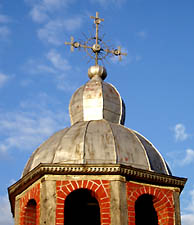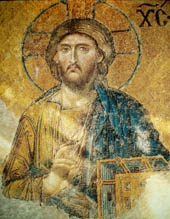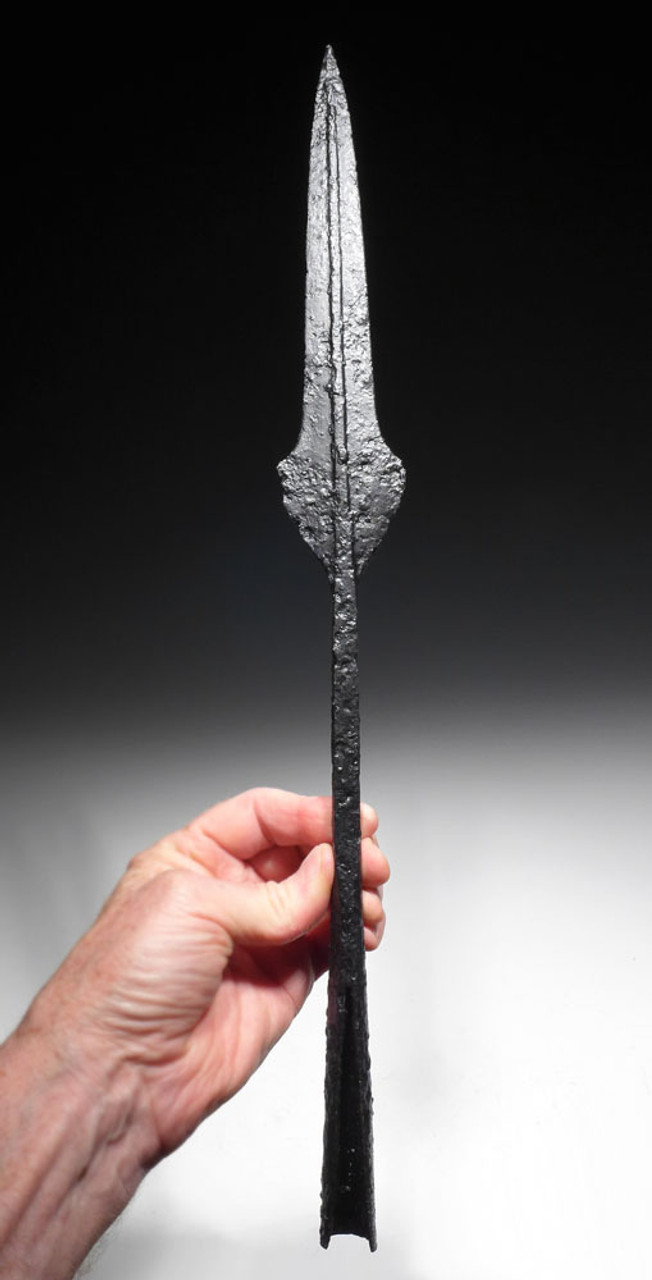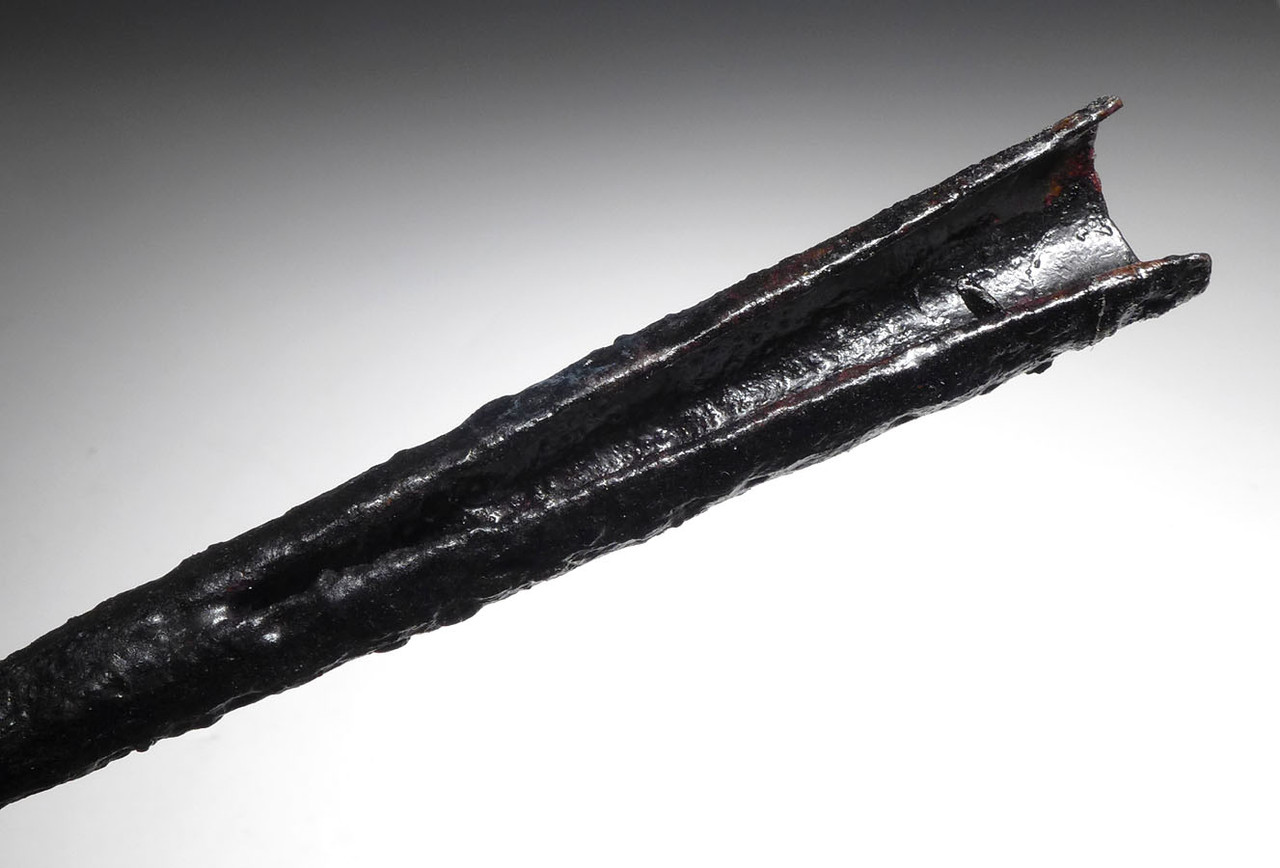Product Description
This is an EXTREMELY RARE shouldered cavalry iron armor-piercing lance spearhead carried and used by a Byzantine Eastern Roman Empire cavalry soldier, against heavily armored enemies. By the late period of the Byzantine Roman Empire, most of the troops of all armies, were heavily armored with emphasis on an armored cavalry. Armor-piercing weapons were increasingly important. This exceptionally rare, museum-class specimen is IDENTICAL to the giant primary cavalry charging lances often seen in Byzantine paintings, icons and illuminated manuscripts. This cavalry lance spearhead has a prominent strengthening mid-rib running down the blade on both sides, giving it strength to prevent breaking or bending when impacting an enemy soldier in a charging attack. This giant lance head would have been effective to penetrate the heaviest of armor such as enemy helmets and iron plate armor on charging enemy horses. The momentum of the charging horse the warrior rode on would have provided lethal energy in its impact. The elongated blade flares at the base to a broad cutting edge shoulder. This was to prevent the spearhead from becoming embedded up into the narrow neck, possibly bending the spear and preventing its removal and redeployment against other enemy soldiers.
The style of this primary charging lance is identical to the numerous art depictions of the time, showing mounted soldiers and their weapons. The images of bands of heavy cavalry carrying extraordinarily long lances in formation show the use of a lance such as this. THIS IS THE ONLY EXAMPLE WE WILL EVER HAVE TO OFFER SO TAKE NOTE ADVANCED COLLECTORS!
These iron weapons were used by the Byzantine Christian Roman armies defending the Empire's northern border along the Danube River in the present day East Balkans. This region was the northern-most boundary of the Roman Empire for most of its duration and evolution into Byzantium right up until 1336 AD when the area fell under Ottoman rule. In the Balkans, Roman camps and fortresses along the Danube were constantly being challenged by opposing tribes and armies. The river served as a natural barrier against attacks from the north. Collected from a region that was once occupied by the Byzantine Roman military as they fought against the challengers of the Christian Roman Empire, these weapons were utilized by Roman soldiers in one of the many violent and frequent battles that took place in defense of Byzantium.
Unlike most metal artifacts sold on the market that are untreated and uncleaned, our specimens our properly cleaned, inspected and conserved in our museum conservation lab prior to being offered for sale to our clients. If ancient metal is NOT treated and stabilized correctly, IT WILL CONTINUE TO DISINTEGRATE AND CORRODE, AND COULD EVENTUALLY FALL APART.
WARNING: There is an increasing number of fake ancient artifacts on the market with many dealers not having a lab facility or the knowledge to identify these fakes. As fine quality original specimens become more scarce, techniques have become more sophisticated to fake these artifacts. The degree to which the fakers have been able to replicate patina to disguise their work, requires expert examination by highly experienced individuals. There are many ancient artifacts being sold now, that are made up of part original and part modern components, or wholly modern pieces displaying artificial patinas. All purchases should include from the dealer, a written guarantee of authenticity with unconditional and lifetime return policies regarding such guarantee.
HISTORY
 Perhaps no other epoch in history is so unique, extensive and yet, as much forgotten as that of the Byzantine Roman Empire. From the founding of its new capitol in Constantinople, 330 AD to its final fall to the Ottoman invaders in 1453, over eleven hundred years of history has virtually been lost in most minds of the Western world. Ironically, it is this exact history that has extensively shaped the Western cultures today, especially those of the Christian faith.
Perhaps no other epoch in history is so unique, extensive and yet, as much forgotten as that of the Byzantine Roman Empire. From the founding of its new capitol in Constantinople, 330 AD to its final fall to the Ottoman invaders in 1453, over eleven hundred years of history has virtually been lost in most minds of the Western world. Ironically, it is this exact history that has extensively shaped the Western cultures today, especially those of the Christian faith.
No event in Western history was probably more pivotal than that of the Christian conversion of the Roman emperor Constantine I. Up to that time, Christians were heavily persecuted by many of the previous emperors and the religion was outlawed. That would all change in 324 AD with a miraculous military victory and subsequent conversion to Christianity by Constantine I at the Milvian Bridge. From this point on, Christianity became the official religion of the Empire. A new capitol was established in Constantinople (present day Istanbul, Turkey) and power was fully transferred from Rome to Constantinople in 476 AD. It was not the end of the Roman Empire but a continuation and fascinating transformation of Roman rule that would last for another one thousand years!
 In the Byzantine Period, the Roman Empire and Christianity were completely interwoven. It was the quintessential example of the UNION of church and state. What was once the ancient world's greatest enemy of the faith, overnight became its most devoted advocate. The classic architecture, style of dress, and overall appearance of all that was "Old Rome" took on a new and intricate style that the world has never seen before or since. This was not only attributed to the influence of the capitol's new geographic location, but also to the foremost prominence of Christianity in the Roman world.
In the Byzantine Period, the Roman Empire and Christianity were completely interwoven. It was the quintessential example of the UNION of church and state. What was once the ancient world's greatest enemy of the faith, overnight became its most devoted advocate. The classic architecture, style of dress, and overall appearance of all that was "Old Rome" took on a new and intricate style that the world has never seen before or since. This was not only attributed to the influence of the capitol's new geographic location, but also to the foremost prominence of Christianity in the Roman world.
A well-known remnant of the Byzantine Period is the stunning and unique art of the religious Icons. This abstract spiritual style can be immediately recognized and is evident in not only paintings and mosaics but also the era's architecture and coins. What was once thought of as crude numismatic issues are now appreciated as highly stylized symbols of the Romans' devout faith.
After the establishment of Constantinople as the new capitol and navel of the Roman world, the Empire continued for almost a millennium eventually bridging ancient and medieval history but not without its share of enemies. Numerous challenges of foreign armies took its toll on defenses and finally, on May 29, 1453 AD, the Muslim Ottomans overran the crumbling city walls and the sun set forever on the greatest empire that the ancient world had ever known.
 US DOLLAR
US DOLLAR
 EURO
EURO
 AUSTRALIAN DOLLAR
AUSTRALIAN DOLLAR
 CANADIAN DOLLAR
CANADIAN DOLLAR
 POUND STERLING
POUND STERLING


















